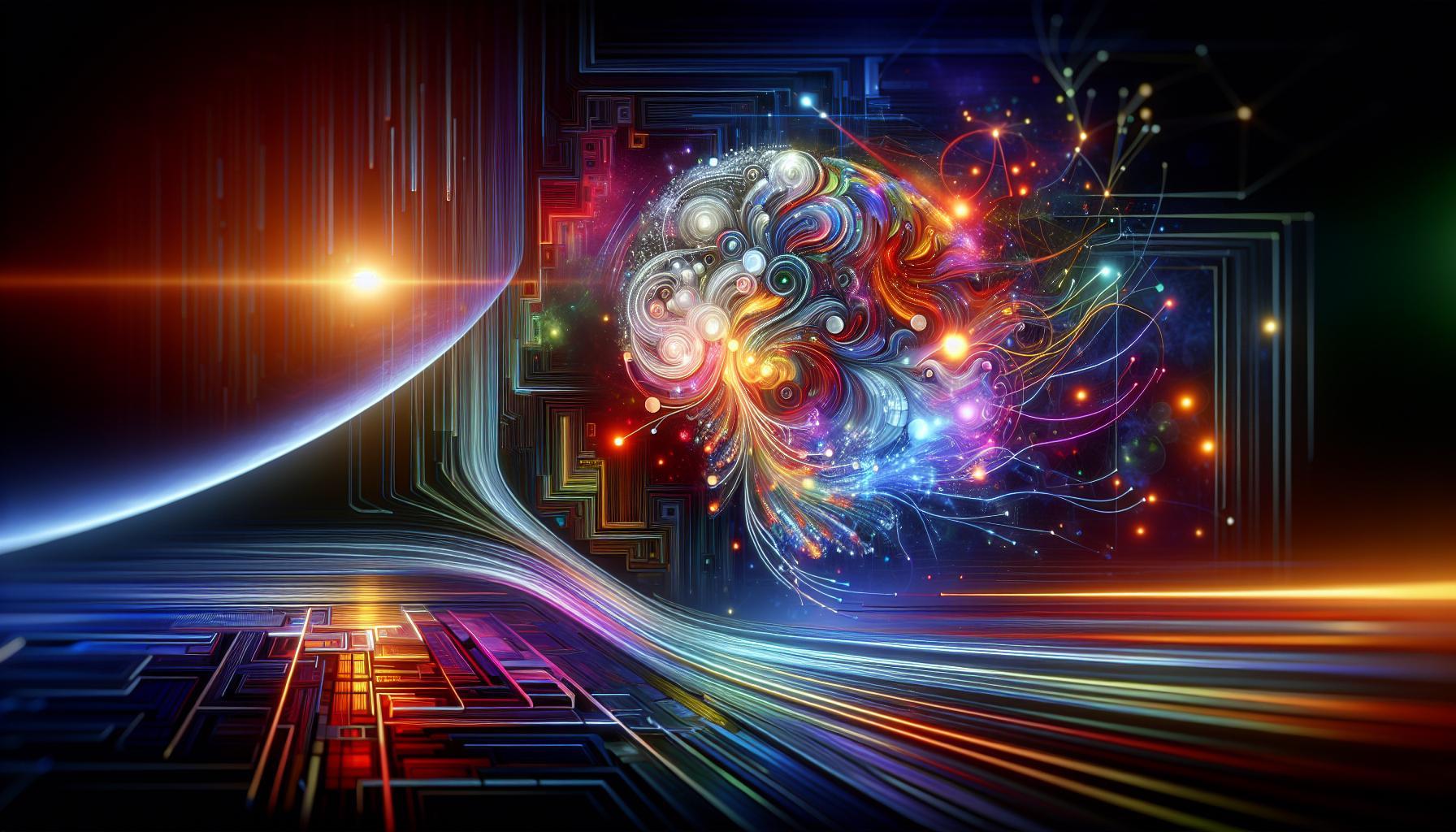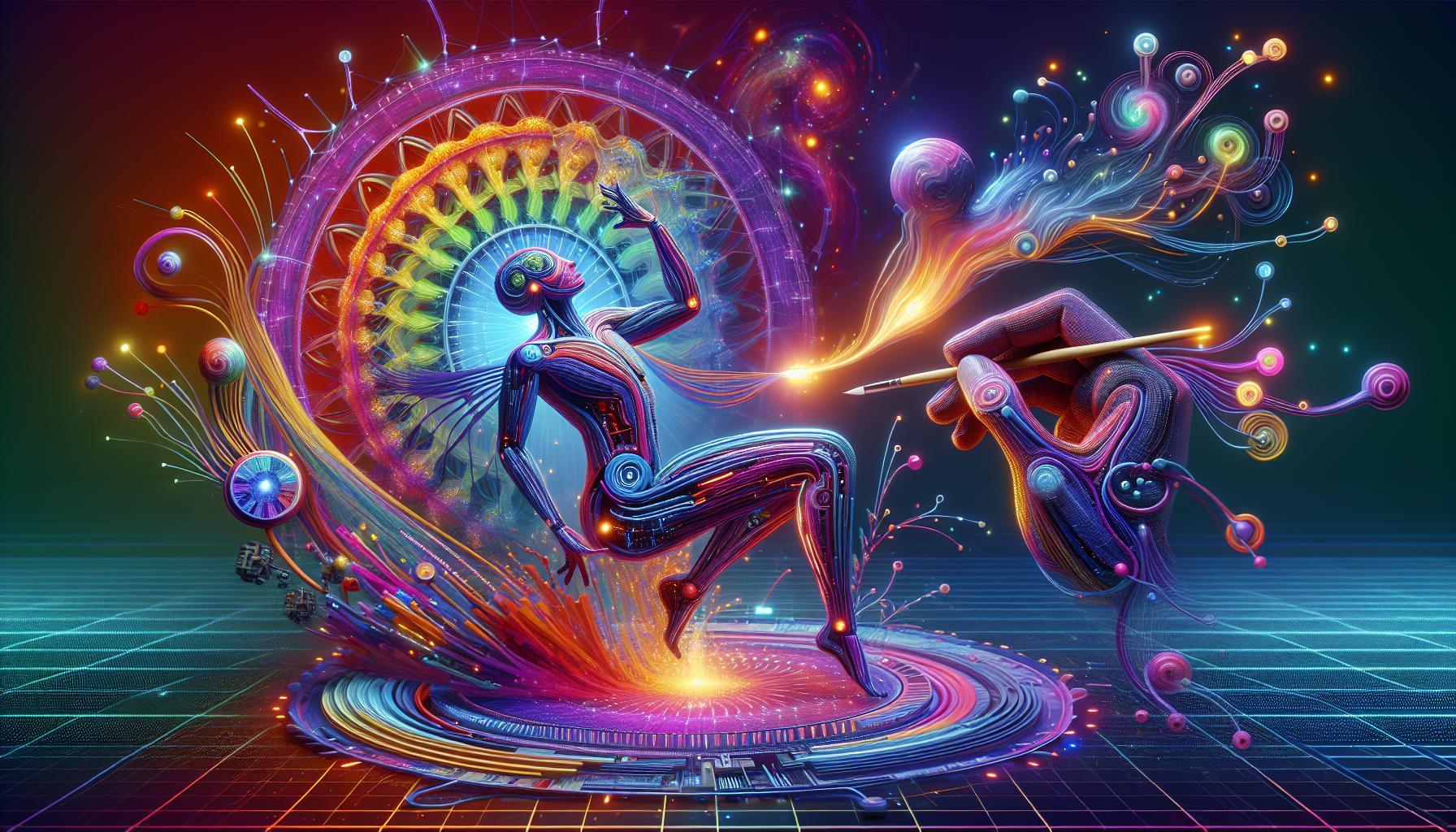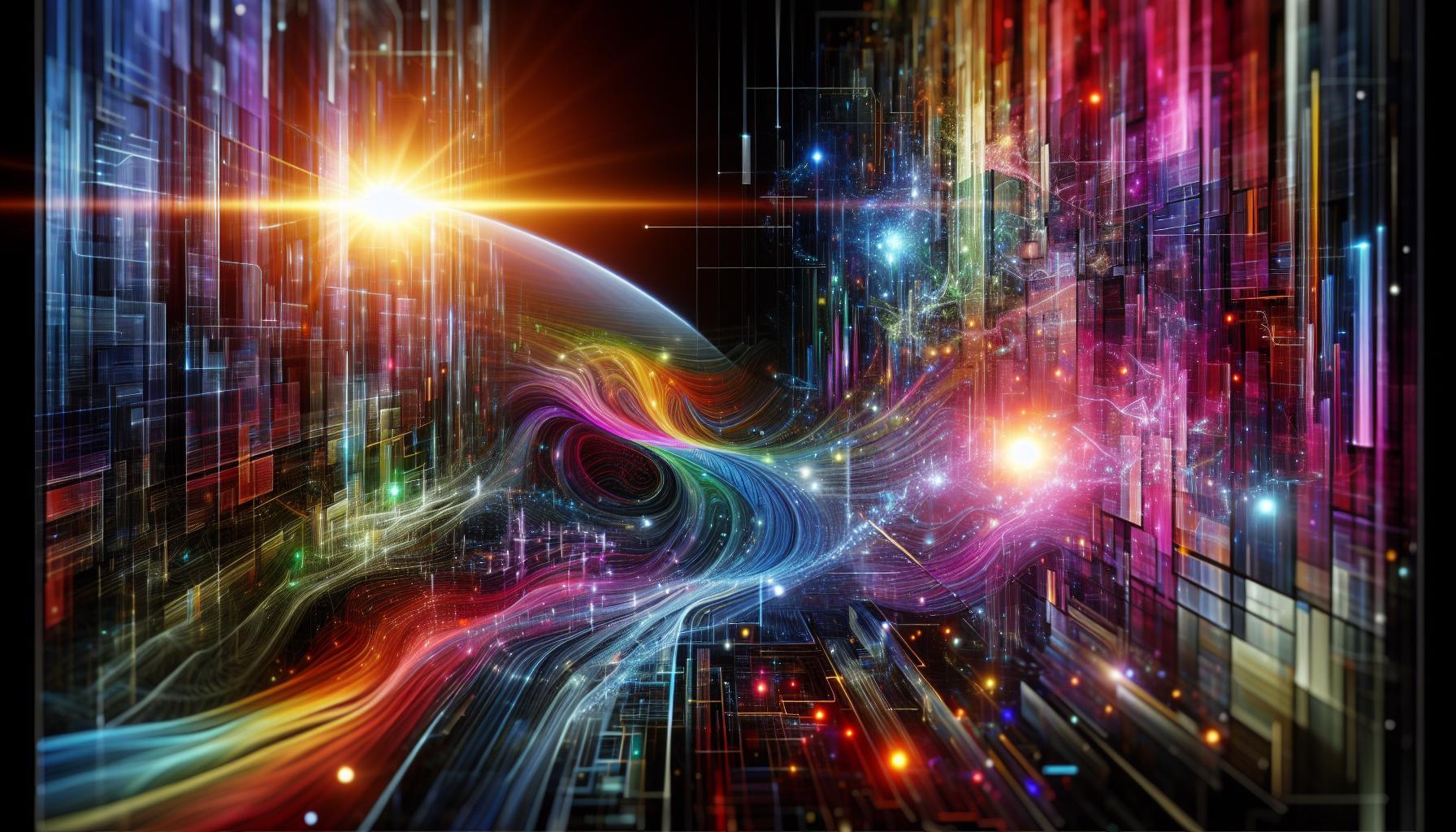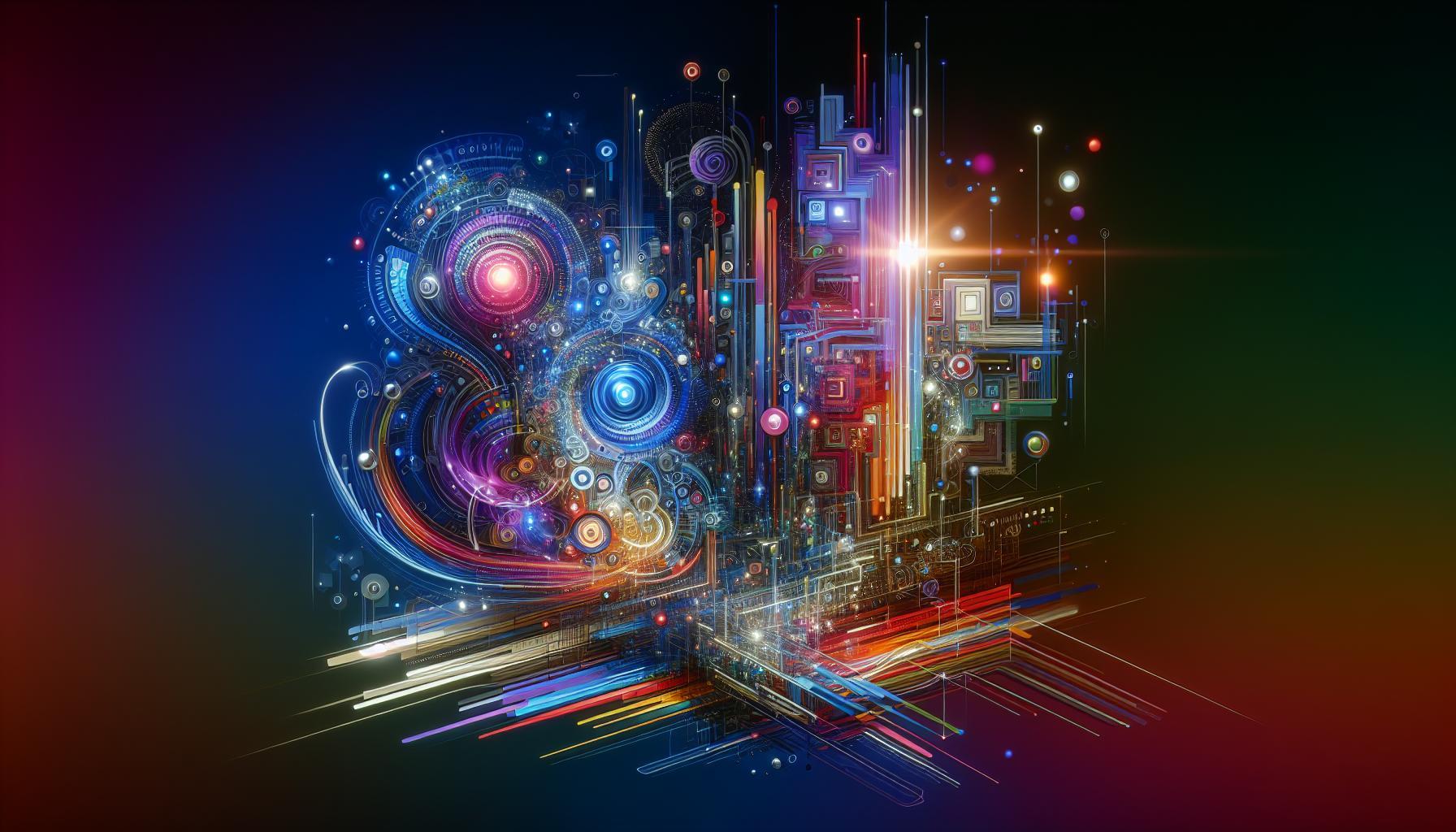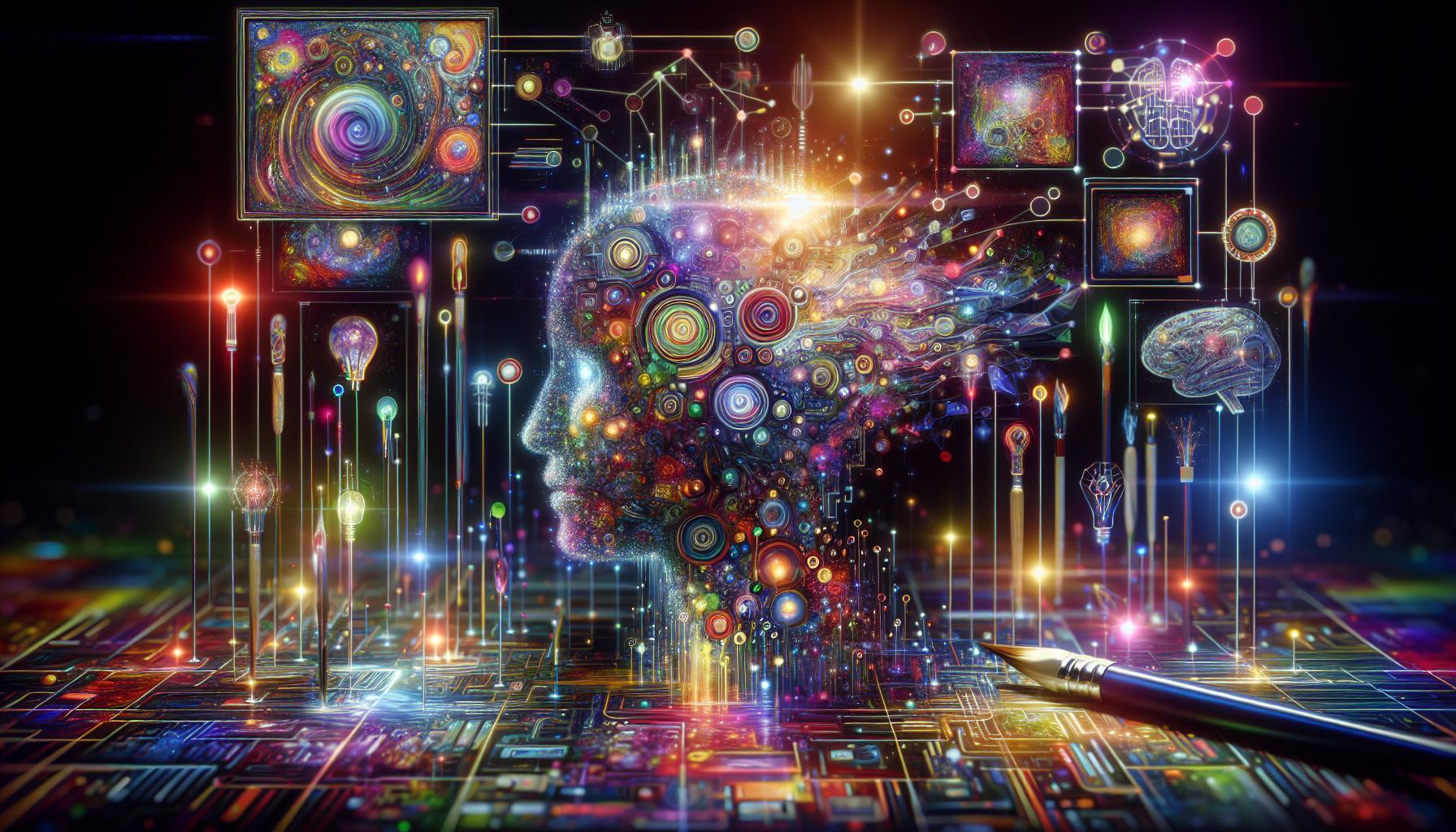As artificial intelligence reshapes the creative landscape, questions about the ethics of AI-generated art loom large. Is the use of tools like Midjourney fair to traditional creators? Exploring these moral dilemmas is crucial, as they impact artists, industries, and the future of creativity itself. Join us in unpacking the complexities of this pressing issue.
Understanding Midjourney: What Sets It Apart in the AI Art Landscape
Midjourney has emerged as a transformative force in the realm of AI art, distinguishing itself through its innovative technology and community engagement. Unlike many of its competitors, Midjourney employs a unique blend of advanced algorithms and artistic sensibilities, which allows users to generate stunning visual art from simple text prompts. This capability not only democratizes art creation but also challenges traditional notions of authorship and creativity. The platform embodies a powerful intersection of design, technology, and human intuition, raising vital questions about the ethics of AI-generated art.
One of the most compelling aspects of Midjourney is its user-friendly interface, which enables artists and non-artists alike to explore their creative potential. By simply typing a command such as /imagine prompt:, users can instantly generate multiple artistic renditions of their ideas. The average turnaround time for image creation is remarkably short, allowing for iterative processes where users can fine-tune their prompts based on the generated outputs. This rapid feedback loop encourages experimentation and innovation, which can be pivotal for both professional and amateur creators.
Midjourney’s community-driven approach further enhances its appeal, creating a vibrant ecosystem where users can share, critique, and collaborate on various projects. This aspect not only fosters a sense of belonging among participants but also serves as a breeding ground for diverse artistic styles and techniques. As users navigate the platform, they engage in meaningful discussions about the implications of AI in the artistic domain, especially in relation to ethical concerns such as ownership, copyright, and the representation of diverse voices in AI-generated art.
To better understand Midjourney’s distinctive position within the AI art landscape, it is crucial to explore its ethical framework. The platform promotes an ongoing dialogue around critical moral questions, such as “Is Midjourney Ethical? Navigating AI Art’s Moral Questions.” By fostering transparency in how art is generated and the intentions behind it, Midjourney encourages users to reflect on the broader implications of their creative endeavors. This commitment to ethical considerations distinguishes it from other platforms, reinforcing the notion that AI can be a tool for empowerment and positive change in the art world.
| Feature | Midjourney | Competitors |
|---|---|---|
| User Interface | Intuitive, prompt-based | Varied, some complex |
| Community Engagement | Strong, supportive | Limited in some cases |
| Ethical Dialogue | Active discussions on AI ethics | Less focus on ethics |
Midjourney stands at the forefront of a rapidly evolving creative landscape, urging both artists and audiences to reconsider the boundaries of art, technology, and ethics. By fostering an environment that encourages critical thinking about the implications of AI, Midjourney not only enhances artistic creation but also becomes a catalyst for broader conversations about the role of intelligence and creativity in our societies.
The Ethical Landscape: Key Moral Concerns in AI-Created Art
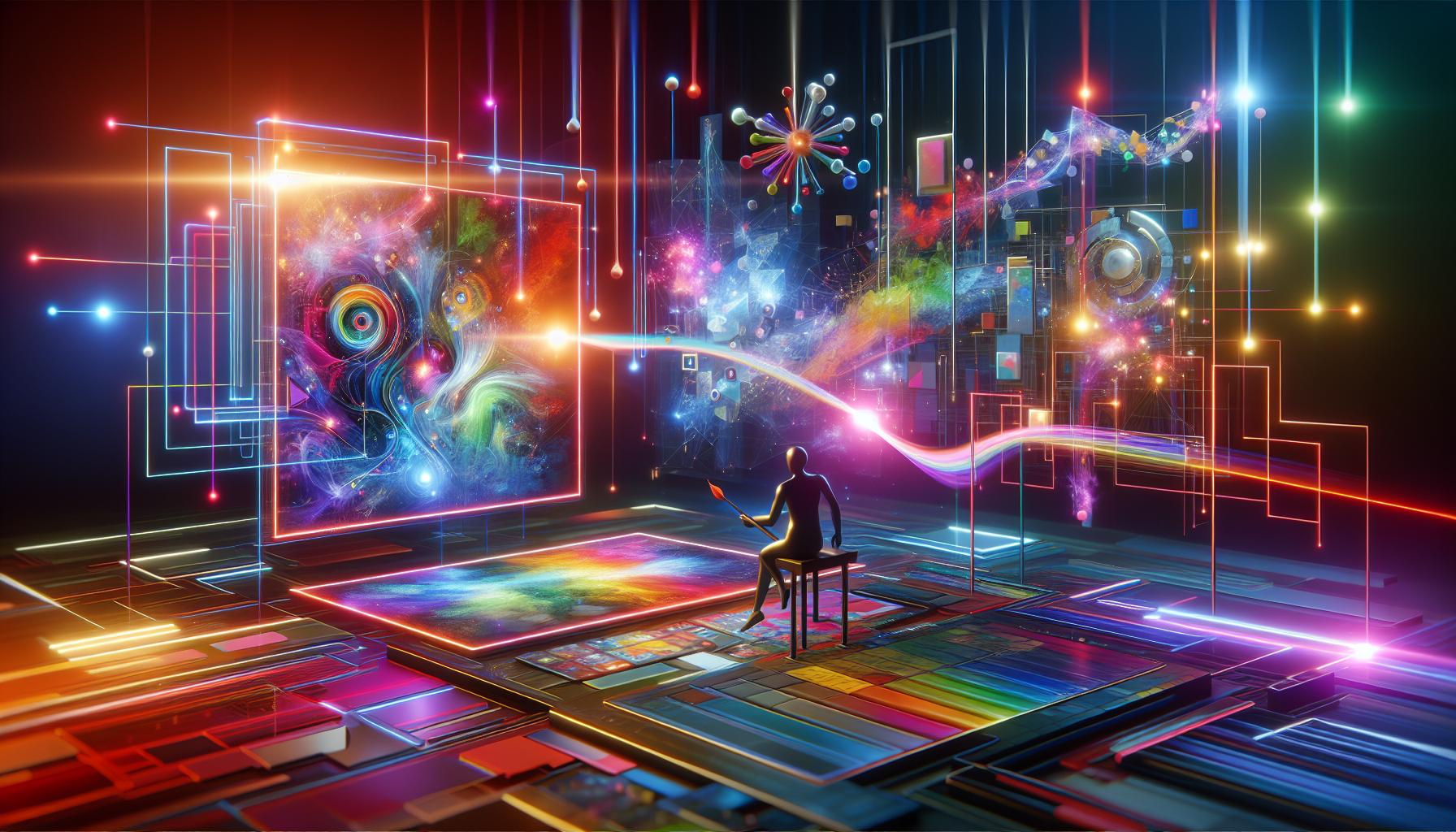
The advent of AI-generated art has sparked a significant debate surrounding the ethical implications of its creation and distribution. With systems like Midjourney gaining prominence, artists and technologists alike grapple with questions of authenticity, authorship, and intellectual property. As AI technologies continue to evolve, understanding the moral landscape surrounding them becomes crucial for anyone involved in the art world, whether as creators, consumers, or critics.
One of the prevailing concerns in this discussion is the issue of authorship. Who truly deserves credit for a piece of art generated by an AI? Should it be the programmer, the artist who prompts the AI, or the AI itself? This question not only affects personal recognition but also has broader implications for copyright and the establishment of intellectual property laws surrounding AI creations. As highlighted in previous discussions about AI in art, opinions vary widely, from those who advocate for co-authorship to those insisting that human artists retain sole credit for any AI-assisted work [[2]].
Another critical aspect pertains to the implications of using AI-generated art in different contexts, particularly in commercial ventures. The integration of AI art challenges traditional notions of creativity and originality. If AI is capable of producing artworks that mimic or build upon existing styles and pieces, does this diminish the value of human-made art? Critics argue that reliance on AI can lead to a homogenization of artistic expression, as algorithms tend to prioritize data-driven approaches rather than embracing the emotional depth typically associated with human creativity [[1]].
As these technologies proliferate, there is an urgent need for ethical guidelines and frameworks that address these moral dilemmas. Without clear standards, artists and organizations may find themselves navigating murky waters. Establishing best practices for the use of AI in art creation can help preserve artistic integrity while simultaneously embracing innovation. For instance, transparency in disclosing the use of AI tools, as well as ensuring fair compensation for artists whose works might influence the training data of AI systems, are necessary steps toward a more ethically sound approach to AI-generated art.
In summary, the ethical landscape of AI-created art is complex and multi-dimensional, prompting essential conversations about authorship, originality, and commercial use. As we continue to explore the question, “Is Midjourney Ethical? Navigating AI Art’s Moral Questions,” it becomes clear that thoughtful consideration and proactive measures are needed to ensure that the future of art remains rich and diverse, balancing technological advancement with respect for human creativity.
Copyright and Creativity: Who Owns AI-Generated Images?
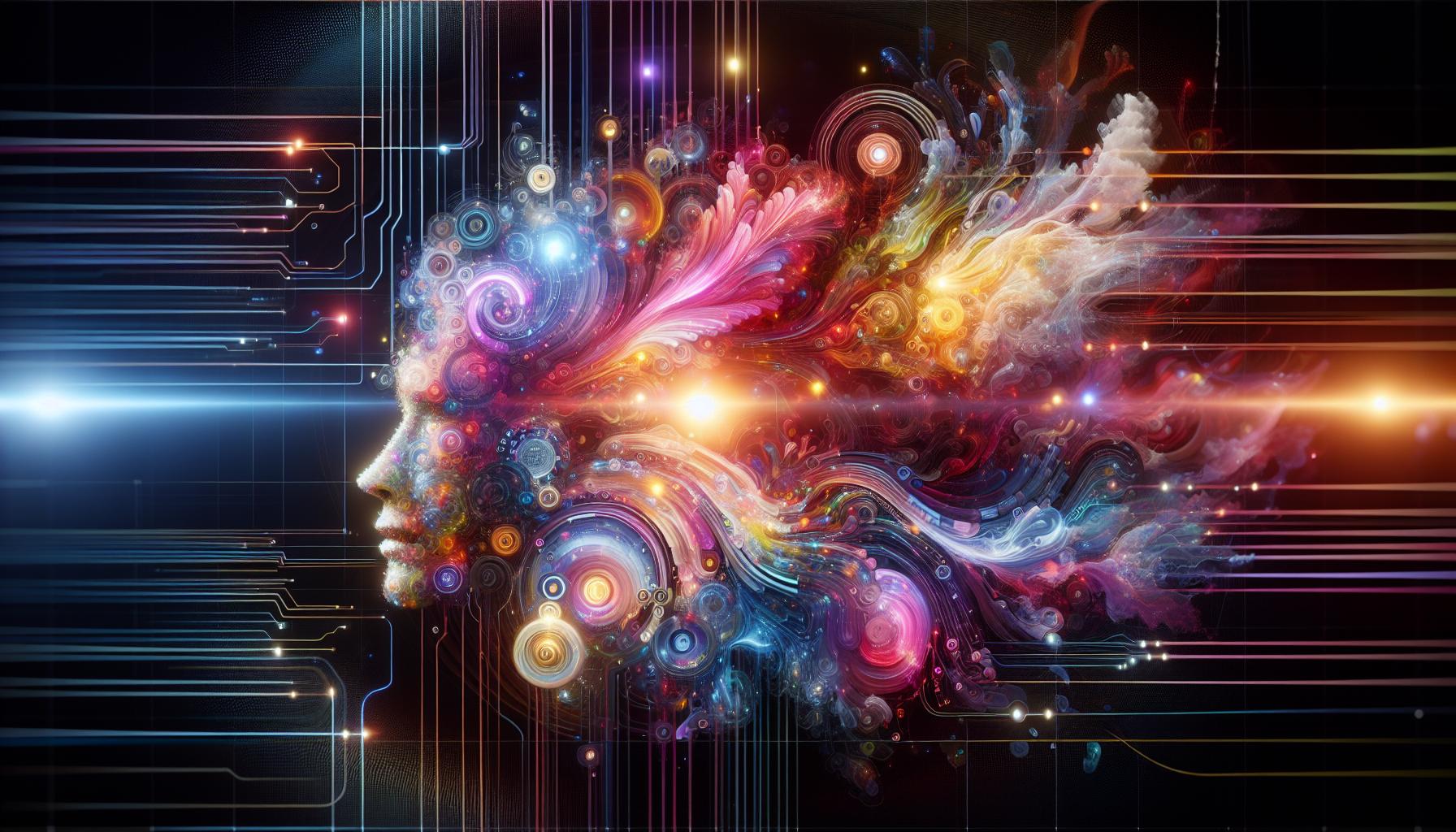
The rise of AI-generated imagery has sparked significant debate over ownership, copyright, and the creative process itself. As tools like Midjourney gain popularity, creators and legislators are grappling with questions about the nature of authorship and whether human involvement suffices to claim copyright status on works produced with AI assistance. The legal landscape is evolving, but current rulings, such as those from the U.S. Copyright Office, suggest that fully AI-generated images cannot be copyrighted due to their lack of perceivable human expression [[1]](https://www.digitaltrends.com/computing/us-copyright-office-says-fully-ai-generated-images-cant-be-copyrighted/). This scrutiny poses important questions regarding the future of creativity in art-making contexts where AI plays a significant role.
As the boundaries blur between human and machine creativity, determining who owns the rights to an AI-generated image requires a nuanced understanding of copyright law. Traditionally, copyright law attributes ownership to human creators, yet AI’s involvement complicates this framework. Factors such as the level of human input and the specific algorithms used in creation significantly impact ownership rights [[2]](https://aaronhall.com/lawyer-explains-who-owns-the-copyright-to-ai-images/). For instance, if a human artist inputs a prompt into Midjourney, to what extent can they claim authorship over the generated content? Understanding these dynamics is crucial for artists who wish to navigate the murky waters of AI art.
Moreover, the ramifications of AI image generation extend beyond ownership disputes; they lead to fundamental discussions about the value and meaning of art itself. As illustrated in exhibitions like Save Ukr(AI)ne, where AI-generated images tell poignant stories, there are ethical implications concerning the use of existing artworks as training data for these algorithms. Are AI systems potentially infringing on the copyrights of the original artists whose works contribute to the learning process? This question not only raises legal concerns but also moral ones about respect and recognition in the art world [[3]](https://www.smithsonianmag.com/smart-news/are-ai-image-generators-stealing-from-artists-180981488/).
In navigating these challenges, artists and creators should consider adopting clear licensing agreements that specify the rights associated with their AI-assisted works. Keeping abreast of copyright developments will also empower creators to leverage their art legally and ethically in this new era of digital creativity. As discussions around “Is Midjourney Ethical? Navigating AI Art’s Moral Questions” continue to unfold, it’s essential for stakeholders in the creative fields to remain informed and proactive about their rights and responsibilities in this evolving landscape.
The Role of Human Intention in AI Art: Are We the Artists?
As artificial intelligence increasingly shapes creative landscapes, the conversation around human intention in AI art has become pivotal. The emergence of tools like Midjourney raises fundamental questions about authorship and artistic intent. While AI generates images based on algorithms and vast data sets, the human element in initiating, guiding, and refining these creations cannot be overlooked. This relationship prompts us to consider not just the output of AI technologies but also the importance of the input provided by human creators.
The Significance of Human Input
The role of intention in AI-generated art is paramount. Every prompt, keyword, and directive given to AI tools reflects the artist’s vision and creativity. For instance, when an individual uses Midjourney to create artwork, they are, in fact, curating the experience by selecting specific themes, styles, and nuances to inform the AI’s output. This collaborative process suggests that humans remain integral to the artistic journey-even when machines execute the final piece. Thus, one could argue that artists employing AI do not relinquish their positions but rather expand their toolkit, leveraging technology to realize new forms of expression.
Attribution and Ownership Challenges
The shift in how art is created invites complex ethical considerations regarding attribution and ownership. As AI-generated images proliferate, the question of who gets credit becomes intricate. Is it the AI’s creators, the user crafting the prompts, or perhaps both? Legal frameworks around intellectual property are struggling to keep pace with this technological revolution. Clear guidelines are necessary to delineate these roles, ensuring that human intention is not only recognized but also safeguarded in a rapidly evolving digital ecosystem. Engaging in open discussions within artistic communities about these issues can help craft a more equitable landscape for all creators involved.
Practical Steps for Artists
Artists navigating the intersection of AI and creativity can take actionable steps to establish their stance in this evolving dialogue:
- Document Your Process: Keep records of prompts, iterations, and adjustments made during the creation process. This transparency can reinforce your role as a co-creator.
- Public Engagement: Participate in forums or workshops to discuss the ethical implications of AI art, fostering community dialogue about intention and authorship.
- Advocate for Clear Guidelines: Push for industry standards that respect the contributions of human creators while addressing the unique challenges posed by AI.
In conclusion, as we explore the moral questions posed by AI art in discussions such as “Is Midjourney Ethical? Navigating AI Art’s Moral Questions”, it becomes increasingly clear that human intention remains a defining element of this artistic frontier. By embracing the technology while advocating for ethical standards and recognition, we can interface with AI art in a way that honors and preserves the essential role of the human artist in every creation.
Transparency in AI: Why Knowing the Technology Matters
In a world where artificial intelligence is revolutionizing creative fields, the significance of transparency in AI systems cannot be overstated. Understanding how AI works-its decision-making processes, the datasets it uses, and the algorithms it employs-empowers users to navigate the moral landscape surrounding its implementation. For instance, when it comes to AI-generated art through platforms like Midjourney, transparency serves as a bridge between technological advancement and ethical considerations. It shapes public perception and trust, essential factors in societal acceptance of these technologies.
The Importance of Knowing AI Technologies
Transparency is crucial for several reasons:
- Building Trust: When creators and consumers can see how AI models are trained and how they function, it fosters a sense of trust. Users are more likely to embrace AI-generated artworks when they understand the underlying processes, thus enhancing community engagement.
- Ensuring Accountability: Transparency holds AI developers accountable for their creations. If an AI model inadvertently replicates or borrows from existing works without permission, being able to trace its sources becomes imperative.
- Paving the Way for Ethical Standards: Clear insight into the AI’s operations supports the establishment of ethical guidelines in AI art. These benchmarks can ensure the equitable use of AI technologies while respecting the rights of original creators.
Moreover, as AI systems increasingly shape artistic narratives, knowing their operational mechanisms allows stakeholders to implement better oversight. For instance, establishing a framework for evaluating the ethical use of AI in art can help clarify responsibilities, especially when it comes to intellectual property disputes.
Real-World Implications
The impact of transparency isn’t just theoretical; it plays a vital role in real-world applications. For example, numerous AI art platforms and developers are now prioritizing open-source practices that allow users to delve into the datasets and algorithms that drive creative outputs. This not only demystifies the AI’s processes but also enables artists and other stakeholders to actively participate in discussions about ethical practices. By doing so, conversations around pieces like those created by Midjourney evolve from mere curiosity to informed critique, allowing for a more nuanced understanding of the ethical dilemmas posed by AI in art.
As we ponder the questions posed in ‘Is Midjourney Ethical? Navigating AI Art’s Moral Questions,’ it becomes clear that transparency in AI technology is more than just a feature-it’s a necessity. It ensures that as we embrace innovation, we do so with a consciousness that respects human creativity and intellectual property.
Navigating Fair Use: How to Use AI Art Responsibly
Using AI-generated art can be a thrilling experience, especially with tools such as Midjourney leading the charge in creative possibilities. However, it poses significant ethical dilemmas and challenges surrounding the fair use of such content. To navigate these complexities responsibly, it’s crucial to understand both legal and ethical paths that guide the utilization of AI art.
Understanding Copyright and Fair Use
Before incorporating AI art into your projects, familiarizing yourself with copyright law is essential. Copyright typically protects original works of authorship, and this includes digital artworks. In the realm of AI, the question of authorship becomes murky. Who owns the rights to a piece created by an AI tool? If an AI generates artwork based on specific prompts and data, the artist using the AI must be cautious about claiming ownership or misrepresenting the work as entirely their own. Generally, fair use allows for limited reproduction of copyrighted material without permission, but this is a nuanced area regarding AI art. Always ask yourself whether your use of the art qualifies as transformative or merely a reproduction.
To better understand the fair use doctrine, consider the following factors:
- Purpose and character of use: Is it for commercial gain or educational purposes?
- Nature of the copyrighted work: Is the art creative or factual?
- Amount and substantiality: How much of the work do you intend to use?
- Effect on the market: Could your use negatively impact the original creator’s revenue?
Best Practices for Responsible Use
When utilizing AI-generated art, embracing transparency is key. If you share or publish AI artworks, acknowledging the role of the AI tool is not only ethical but can enhance your credibility. For instance, stating that your artwork was generated using Midjourney or another AI platform helps clarify the collaborative nature of the creation. Additionally, keep in mind the ethical guidance related to AI art, which suggests that you should never present AI-generated images as solely your own work.
Furthermore, consider the potential impact of your use on the broader artistic community. Supporting original artists and their works by ensuring that AI-generated art does not encroach on their rights further reinforces a responsible approach. If you intend to use an AI-generated piece commercially, seeking permission or a licensing agreement may preempt potential legal issues.
| Question | Consideration |
|---|---|
| Have I credited the AI tool? | Ensure transparency in your creative process. |
| Is my use transformative? | Does my work add new meaning or purpose to the original? |
| Could my use harm the original artist? | Assess the market impact of your use. |
By adopting these practices, you can navigate the ethical landscape of AI art responsibly. Engaging thoughtfully with the questions surrounding authorship and fair use will not only protect you legally but also foster a creative environment that respects the contributions of both human and machine artists.
Community Perspectives: What Artists and Users Think About Midjourney
The rise of AI-generated art has sparked a lively debate among artists and users about the ethical implications of platforms like Midjourney. While some view these tools as revolutionary, empowering creators with new ways to express their imagination, others raise significant concerns regarding copyright infringement and the authenticity of generated work. This dichotomy highlights the complex relationship between technological advancement and artistic integrity.
Artists’ Concerns
Many artists have expressed their outrage over how Midjourney and similar platforms utilize copyrighted material to train their algorithms. A class-action lawsuit initiated by Matthew Butterick accuses organizations behind AIs like Midjourney of remixing works from countless artists without permission, arguing that this undermines the value of their original creations. Artists fear that the ability of these AIs to replicate their styles may dilute their market and erode their rights. Such actions have prompted a call within the artistic community for stricter regulations on how AI systems access and use proprietary content.
User Experiences and Insights
On the user side, opinions are more varied. Many enthusiasts appreciate the creative potential that tools like Midjourney offer, allowing individuals without formal artistic training to produce visually stunning works. Users often emphasize the collaborative nature of using AI, framing it not as replacement but rather as an innovative partner in the creative process. This perspective can foster an environment where both traditional and digital art coexist, encouraging users to incorporate these technologies in ways that complement human creativity.
Moreover, the conversation around ethics in AI art continues to evolve. As tools become more integrated into the daily practices of artists and designers, platforms like Midjourney need to address critical ethical questions. Options such as providing clear attributions, establishing opt-out mechanisms for artists, and exploring alternative models for artist compensation are potential steps towards creating a more balanced landscape for creativity. By involving artists in the development process, AI platforms can foster goodwill and promote an ethical approach to artistry in the digital age.
In summary, as the discourse around “Is Midjourney Ethical? Navigating AI Art’s Moral Questions” develops, it’s crucial for both artists and users to engage in constructive dialogue that honors the heritage of creative work while embracing the innovations that technology brings. A concerted effort to address these moral questions could pave the way for a future where AI and human creativity thrive side by side.
Future Implications: How AI Art is Shaping Creative Industries
The integration of AI in the creative industries is not just a trend; it is revolutionizing the very fabric of artistry and expression. As organizations and independent creators employ tools like Midjourney, the discourse surrounding the ethics of AI-generated art becomes increasingly pertinent. In exploring the future implications of AI in creativity, we unearth profound transformations concerning how art is produced, perceived, and valued.
One of the most significant shifts is the democratization of creative expression. Artists-regardless of their background or training-now have unprecedented access to sophisticated tools that can aid in the creation of complex artworks. AI platforms enable users to produce high-quality art pieces effortlessly, thus blurring the lines between amateur and professional creators. This democratization raises essential questions related to authorship and originality. Is a piece created with AI less valuable than one crafted entirely by human hands? The answer could shape the future of art markets and how we define the role of the artist.
Furthermore, this new era of collaboration between humans and machines is paving the way for hybrid forms of creativity. Many artists are beginning to view AI as a collaborator rather than a competitor. By embracing AI tools like Midjourney, creators can explore innovative artistic directions that may have previously seemed unattainable. This collaboration results in unique art forms that meld human intuition with machine precision, challenging traditional notions of creativity.
To navigate these evolving paradigms, the industry must consider ethical frameworks that govern the use of AI in art. It’s essential for artists, collectors, and audiences to engage in discussions about the implications of AI-generated content. Establishing guidelines that protect intellectual property while encouraging innovation is crucial for fostering a healthy creative ecosystem.
In summary, as we address the questions posed in “Is Midjourney Ethical? Navigating AI Art’s Moral Questions,” the future of AI in the creative industries appears vibrant yet complex. The interplay between technology and human creativity holds immense potential, provided we are willing to engage with the ethical challenges it presents. Embracing this change with an open mind will ultimately enrich the creative landscape, allowing diverse forms of expression to flourish alongside emerging technologies.
FAQ
Is Midjourney ethical in its use of copyrighted materials?
The ethical status of Midjourney regarding copyrighted materials is debated. Critics argue that Midjourney may violate copyright laws by using existing artworks without permission to train its AI models.
This raises significant questions about the rights of artists whose works may influence or be incorporated into AI-generated images. Understanding these issues is essential when exploring AI art’s moral questions and how they affect the creative community.
How does Midjourney compare to other AI art generators?
Midjourney is often compared to other AI art generators like DALL-E 2 and Stable Diffusion, especially regarding ethical practices. While all three use training data to generate art, the transparency of data sourcing varies among them.
For instance, DALL-E 2 has faced scrutiny similar to that of Midjourney, reflecting broader concerns in the AI art community. It’s crucial to consider these differences when evaluating Is Midjourney Ethical? Navigating AI Art’s Moral Questions.
What are the main ethical concerns surrounding Midjourney?
The primary ethical concerns related to Midjourney focus on copyright infringement, the authenticity of AI-generated art, and the potential devaluation of traditional artists’ work.
As AI art becomes more prevalent, questions arise about who owns the rights to AI-generated images and the implications for original artworks. These challenges necessitate a careful examination of the ethical landscape of AI-generated art.
Can I use Midjourney images for commercial purposes?
Using Midjourney images for commercial purposes is permissible but comes with caveats. Users must understand the service’s terms, which may impose restrictions depending on the image context and usage.
Therefore, always check the copyright terms provided by Midjourney before commercial use. This ensures that you operate within ethical guidelines while exploring AI art’s moral questions.
Why does the discussion around Midjourney’s ethics matter?
Discussing Midjourney’s ethics is important because it highlights the intersection of technology and creativity. As AI tools transform artistic practices, understanding their implications will shape future artistic rights and responsibilities.
By engaging with these ethical discussions, artists and users can navigate the challenges posed by AI-generated content, fostering a more equitable creative environment.
What steps can artists take to protect their work from AI misuse?
Artists can take several proactive steps to protect their work from potential misuse by AI platforms like Midjourney. These include registering copyrights and utilizing digital watermarks to mark their artworks visibly.
Furthermore, engaging in discussions about the ethics of AI art and supporting initiatives that advocate for artists’ rights plays a crucial role in shaping a responsible future for AI-generated art.
Is it possible to create ethical AI art?
Yes, it is possible to create ethical AI art by respecting copyright and attribution rules. This involves ensuring that AI models are trained on data obtained legally and that artists receive recognition for their work.
By committing to these principles, creators can contribute positively to the field of AI art’s moral questions, paving the way for a collaborative and respectful artistic environment.
In Retrospect
As we navigate the intricate landscape of AI-generated art with platforms like Midjourney, it’s essential to reflect on the ethical dimensions surrounding its use. The technology behind these image generators relies on vast datasets, which often include works from established artists, igniting debates on copyright infringement and fair use. By understanding the legal and moral implications, creators can engage thoughtfully with these tools-balancing artistic innovation with respect for original creators.
Moreover, the evolving nature of AI poses questions around accountability and the potential for bias within these systems. It’s crucial for users to familiarize themselves with the terms of service and ethical guidelines of AI tools to ensure responsible usage.
In conclusion, while Midjourney and similar platforms present exciting opportunities for artistic expression, it’s vital to approach them with a critical eye. We encourage you to delve deeper into the nuances of AI art, explore the resources available, and contribute to conversations about its future. Your engagement can help shape a more ethical framework for this transformative technology, empowering creativity and innovation within a responsible context. Explore, create, and innovate, while always keeping ethics at the forefront of your journey in the world of AI art.

